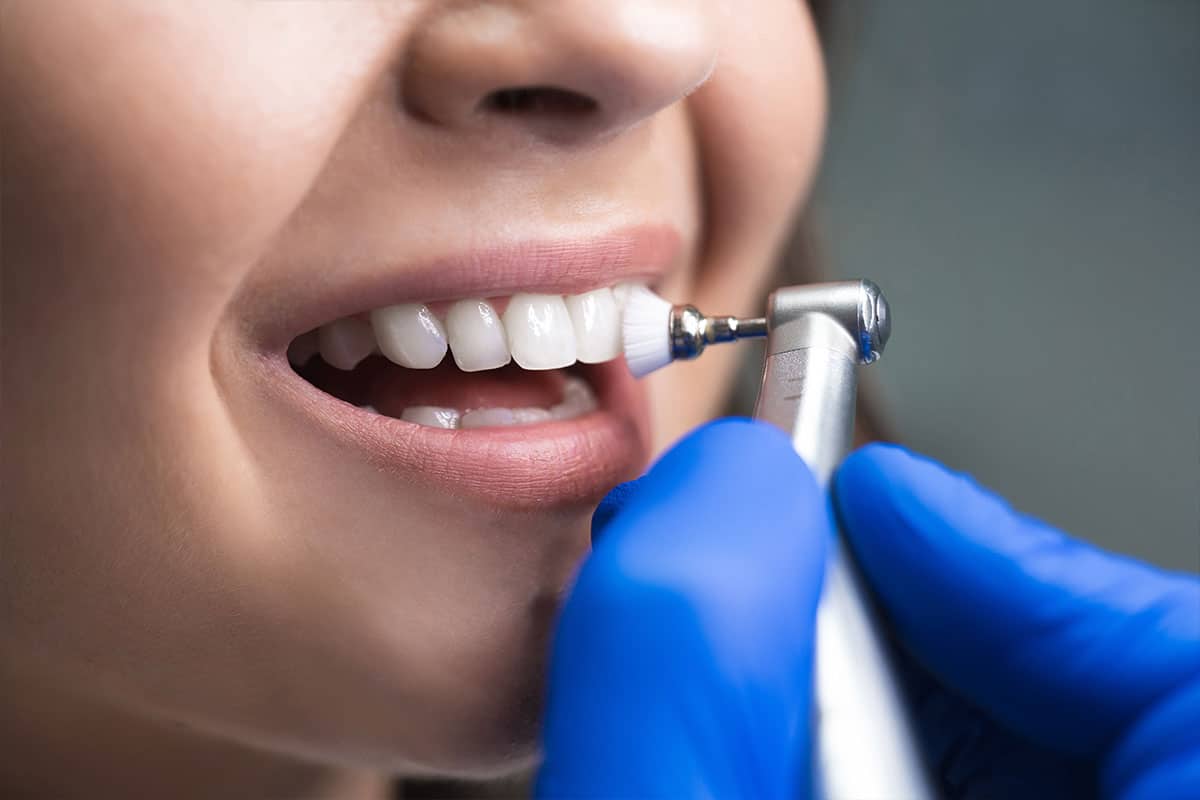Teeth Cleaning and polishing
- Home
- Teeth cleaning and polishing

Tooth polishing is a dental procedure that leaves your tooth enamel glossy and smooth. At many dental offices, it’s a standard part of a routine cleaning appointment.
Tooth polishing doesn’t just have a cosmetic benefit for your teeth. This procedure, when paired with dental scaling, can freshen your breath and help you avoid tooth decay.
We spoke to a dentist to find out:
- if tooth polishing is important for oral health
- how often you should have your teeth polished
- how much this procedure costs
- whether or not you should try to polish your own teeth at home
Keep reading to learn the answers to these questions and more.
Types of Tooth Polishing
- Therapeutic polishing – Many a times during a dental surgical procedure, the cementum covering the root is exposed. Therapeutic polishing assists in the removal of any microflora and endotoxins from the surface of cementum.
- Coronal / cosmetic polishing – This type of polishing removes the plaque and superficial dental stains. Superfine abrasive agents are used to make the enamel (outer layer covering the crown of the tooth) lustrous. Enamel surface is polished to an extent that it can even reflect the visible light.
- Superficial polishing – This technique polishes the crown of the tooth. However, this technique has nominal curative benefits, and is primarily done to improve the aesthetic appearance of the teeth.
- Selective polishing – Selective polishing is also termed as extrinsic stain removal or selective stain removal. This polishing technique is recommended post scaling procedure, and it removes any remaining stains.
Advantages of Tooth Polishing
Tooth polishing is a procedure which not only polishes the teeth but also removes the dental stains, plaque, and microorganisms formed on the outer surface of the teeth.
The main advantage of tooth polishing over the tooth scaling (deep cleaning of the teeth) is that it is a painless procedure. Also, patients experience clean and smooth teeth instantaneously after the procedure.
Objectives of Tooth Polishing
Earlier, tooth polishing was routinely done as a part of dental prophylaxis. However, soon it was realized that the overuse of this technique erodes outermost covering of the tooth structure. The loss of the outer structure makes teeth more vulnerable to stains and plaque accumulation. Also, repetitive use of this procedure removes the protective fluoride layer surrounding the teeth.
These days, dentists do not recommend tooth polishing as a routine dental procedure, and a careful case selection is done prior to this procedure.

